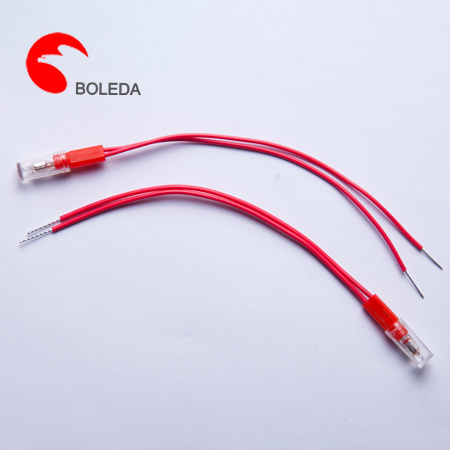How to Interpret Indicator Lamps on Your Vehicle's Dashboard
Interpreting indicator lamps on your vehicle's dashboard is an important skill that every driver should possess. These lamps provide crucial information about the status and condition of various systems in your vehicle. Understanding what these indicators mean can help you detect potential issues or malfunctions before they escalate into larger problems. In this article, we will discuss some common indicator lamps found on dashboard displays and how to interpret them.
1. Check Engine Light: The check engine light is perhaps the most well-known indicator lamp on a vehicle's dashboard. When this light illuminates, it indicates that there is a problem with the engine or its related components. While it can be triggered by something as simple as a loose gas cap, it can also indicate more serious issues, such as a malfunctioning sensor or a misfiring engine. When the check engine light comes on, it is best to consult a mechanic or use an OBD-II scanner to identify the specific issue.

2. Battery/Charging System Light: This indicator lamp usually depicts a battery or the word "ALT" (alternator). When it lights up, it indicates a problem with the vehicle's charging system. Possible issues could include a faulty alternator, a loose or damaged belt, or a drained battery. If this light illuminates while driving, it is important to take immediate action as continued driving can lead to a dead battery and potential stranded situation.
3. Oil Pressure Warning Light: This indicator typically looks like an oil can or an oil drop. When it lights up, it indicates low oil pressure. Low oil pressure can be caused by a variety of factors, such as a low oil level, a faulty oil pump, or a clogged oil filter. Ignoring this warning light can cause significant damage to your engine, so it is essential to check the oil level and consult a mechanic if necessary.
4. Tire Pressure Monitoring System (TPMS) Light: This indicator lamp looks like a horseshoe with an exclamation point in the middle. When it illuminates, it indicates low tire pressure. Modern vehicles are equipped with TPMS sensors that monitor the pressure of each tire. Low tire pressure can compromise safety and fuel efficiency, so it is important to check and inflate the tires to the recommended pressure as soon as possible.
5. ABS Warning Light: This indicator light represents the Anti-lock Braking System. When it lights up, it indicates a problem with this system. The ABS is designed to prevent the wheels from locking up during heavy braking, enhancing vehicle control. A faulty ABS system can compromise braking performance, so it is recommended to have it checked by a professional as soon as possible.
6. Airbag Warning Light: This indicator light usually depicts a person sitting with a deployed airbag in front of them. When it illuminates, it indicates a problem with the airbag system. A faulty airbag system might not deploy correctly in case of an accident, increasing the risk of injury. Therefore, it is essential to have this issue inspected by a mechanic to ensure the airbag system's proper functioning.
7. Fuel Indicator Light: This lamp depicts a gas pump or fuel gauge. When it lights up, it means that the vehicle's fuel level is low and needs to be refilled. It is important not to ignore this warning, as running out of fuel can lead to an unexpected breakdown, especially in remote areas.
These are just a few examples of the indicator lamps you might encounter on your vehicle's dashboard. It is important to consult your vehicle's owner manual to learn about the specific indicator lamps and their meanings for your particular make and model.
In conclusion, interpreting indicator lamps on a vehicle's dashboard is crucial for maintaining your vehicle's safety and performance. By understanding the meaning behind these indicator lamps, you can detect and address potential issues promptly. Always consult your vehicle's owner manual or seek professional help to diagnose and fix any problems indicated by these warning lights.

 NE-2 orange color
NE-2 orange color 410 613 Neon lamp with resistor, cable and sleeve, resistor neon tubes
410 613 Neon lamp with resistor, cable and sleeve, resistor neon tubes 513 616 Neon lamp with resistor and cable and sleeve and ring terminal L terminal
513 616 Neon lamp with resistor and cable and sleeve and ring terminal L terminal E10BA9S Plastic Shell Tin soldering, butt welded, crimped Neon Glow Lamps
E10BA9S Plastic Shell Tin soldering, butt welded, crimped Neon Glow Lamps Fuse type Neon Lamp Tin soldering, butt welded, crimped with resistor for test pen
Fuse type Neon Lamp Tin soldering, butt welded, crimped with resistor for test pen 6 mm Neon indicator lamps, indicating lamps with resistor and PVC cableSilicone cable
6 mm Neon indicator lamps, indicating lamps with resistor and PVC cableSilicone cable 10 mm Neon indicator lamps, signal lights with PVC cable
10 mm Neon indicator lamps, signal lights with PVC cable 12 mm Neon indicator lamps red color with Crimped resistor PVC cable
12 mm Neon indicator lamps red color with Crimped resistor PVC cable 3mm5mm Led light, LED lamp with resistor and diode
3mm5mm Led light, LED lamp with resistor and diode 3 mm leds roundStrawflat shape, water cleardifussed
3 mm leds roundStrawflat shape, water cleardifussed 5 mm leds roundStraflat shape, water cleardifussed
5 mm leds roundStraflat shape, water cleardifussed





























Comment
(0)